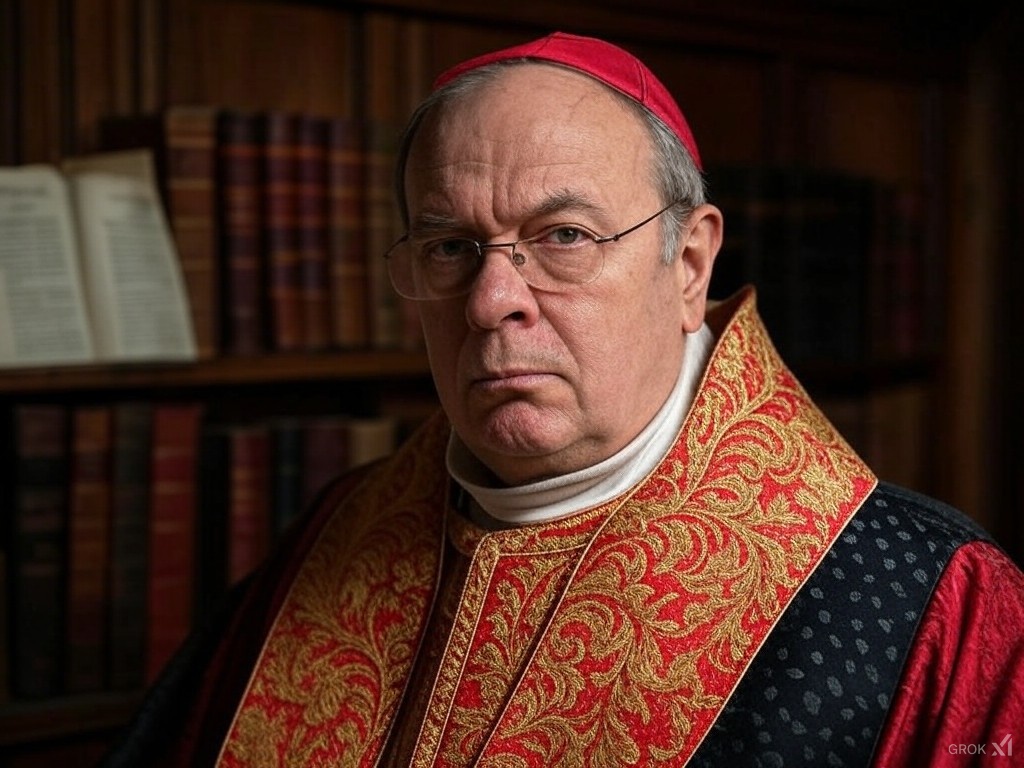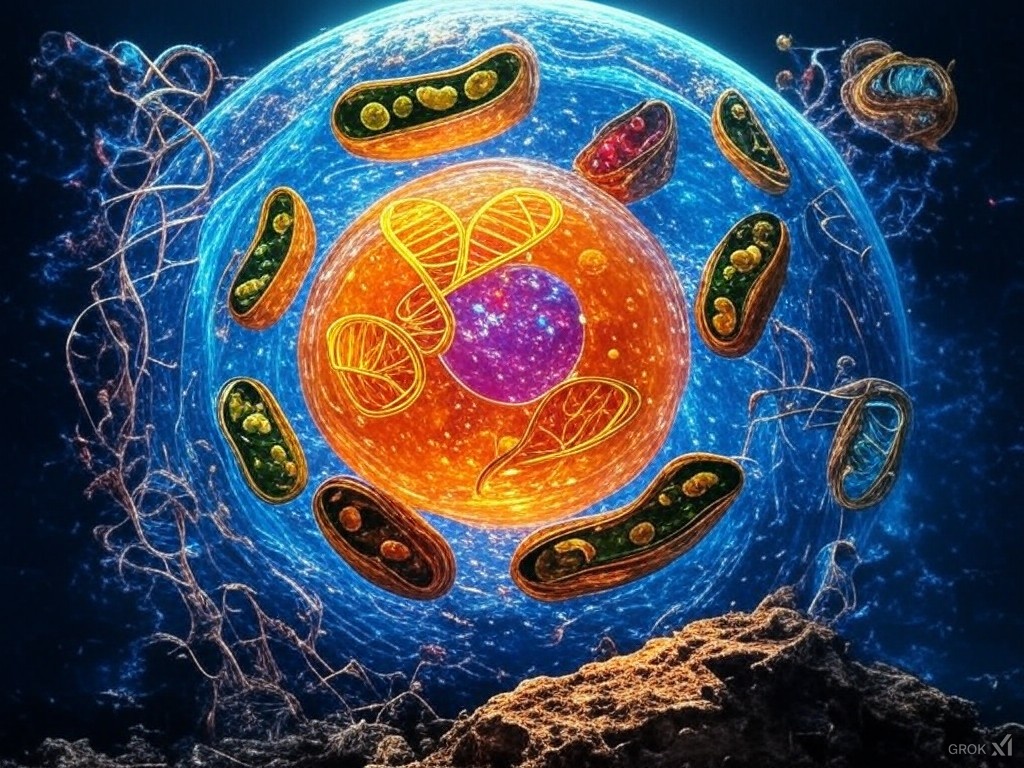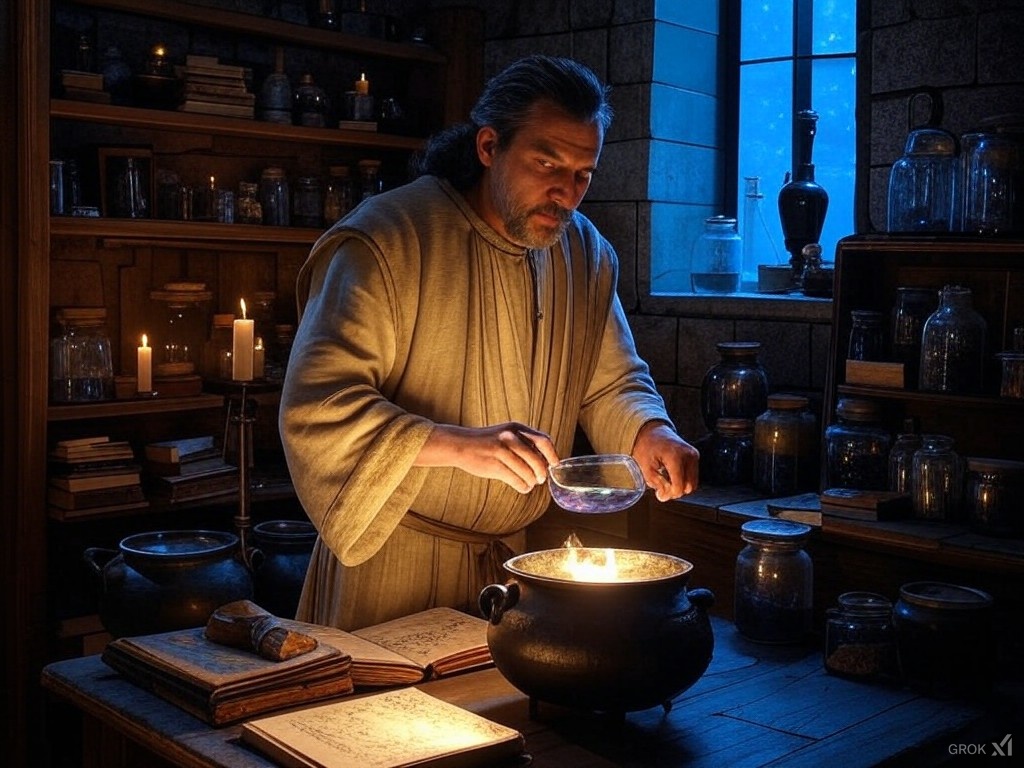Imagine Netanyahu being subjected to a device similar to the Total Perspective Vortex from "The Hitchhiker's Guide to the Galaxy." Instead of a piece of fairy cake, the universe might be extrapolated from something significant to him, perhaps a political speech or a piece of legislation that was particularly contentious. The revelation would be his scale in the grand scheme of cosmic time and space, perhaps showing him his actions' true significance or lack thereof from an eternal perspective.
In the annals of history, Cardinal Richelieu stands as a figure of immense power, whose influence over the French language and culture was as profound as his political machinations. His era was marked by a rigorous control over discourse, where vulgarities and insults against him or the state could lead to censorship or worse. Fast forward to contemporary Germany, and we observe a somewhat analogous scenario where politicians are using legal avenues to combat insults and vulgarities, raising questions about freedom of expression in a modern context.
Cardinal Richelieu, through the establishment of the Académie française and his oversight of censorship, aimed to purify and elevate the French language, indirectly influencing what was considered acceptable speech. His approach was less about removing specific vulgar words and more about promoting a cultured discourse that aligned with his vision of a centralized, refined French state. This control over language was part of a broader strategy to manage dissent and shape public opinion in an age where the pen was mightily feared.
Contrast this with contemporary German politicians, particularly those from the Green Party like Robert Habeck and Annalena Baerbock, who have been noted for their readiness to sue over insults. German law, specifically § 185 of the Criminal Code, allows for such legal recourse, defining insults as a criminal offense. This modern approach, while not about censorship in the same historical sense, functions similarly by aiming to control the narrative surrounding public figures. It reflects a cultural value placed on honor and reputation, akin to the decorum Richelieu sought to enforce, but through judicial rather than autocratic means.
Both instances highlight a tension between individual rights to honor and the broader societal right to freedom of expression. In Richelieu's time, this balance was tilted heavily towards state control to ensure stability and the monarch's image. Today, in Germany, the legal system serves as the arbiter, navigating through the complexities of modern communication, especially on social media, where insults can proliferate rapidly. The use of lawsuits by politicians could be seen as an attempt to maintain dignity in public life against the backdrop of an often harsh and immediate public scrutiny.
However, these parallels also underscore a significant difference: the democratic framework within which modern German politicians operate. While Richelieu wielded absolute power, today's politicians are subject to public opinion and legal oversight, which theoretically should protect free speech. Yet, the frequent use of legal challenges against citizens for insults might suggest a cautious approach to criticism, potentially chilling free speech by making people wary of voicing their opinions.
In essence, both Cardinal Richelieu and contemporary German politicians reflect the ongoing struggle between managing public discourse and preserving or expanding the boundaries of free expression. While Richelieu's methods were direct and authoritarian, today's politicians use the legal system to navigate similar waters, showing that the question of how much insult can be tolerated in public life is as relevant now as it was centuries ago. This comparison illuminates the timeless challenge of balancing personal honor with democratic freedoms, a debate that continues to evolve with each new era's technological and cultural context.

The tapestry of life on Earth has been woven with threads of cooperation as much as competition. One of the most profound examples of this cooperation in evolution is endosymbiosis, where one organism lives inside another to mutual benefit. This process has not only shaped the complexity of eukaryotic cells but also underpinned the resilience and diversity of life forms we see today. From the nucleus to mitochondria and chloroplasts, endosymbiosis has been a key player in the evolutionary narrative, enhancing the adaptability and survival of organisms across various environmental challenges.
At the dawn of eukaryotic life, an archaeal host cell, possibly from the Asgard group, might have engulfed a bacterium, leading to the formation of the nucleus (Martin, W. F., & Koonin, E. V., 2006). This event provided an immediate advantage by:
The acquisition of mitochondria, likely from an alpha-proteobacterium, was a game-changer for early eukaryotes (Gray, M. W., 2012). This endosymbiotic event:
The story of chloroplasts, descending from cyanobacteria, adds another layer of complexity and survival advantage (Keeling, P. J., 2013). This secondary endosymbiosis:
Lichens represent an ongoing saga of endosymbiosis, involving fungi with algae or cyanobacteria (Nash, T. H., 2008). Their existence exemplifies:
The "Serial Endosymbiosis Theory" (SET) by Lynn Margulis, and subsequent models like the "hydrogen hypothesis" (Martin, W., & Müller, M., 1998), have shaped our understanding of these events. Recent genomic and phylogenetic studies continue to refine these theories, suggesting:
Each endosymbiotic event in evolution has not just added complexity but has layered organisms with resilience, allowing life to thrive in diverse and often harsh environments. From the protective nucleus to the energy-efficient mitochondria and the photosynthetic chloroplasts, these symbiotic integrations have created cells and organisms capable of withstanding evolutionary pressures. As we continue to unravel the intricacies of these ancient partnerships, we gain not only insights into life's past but also inspiration for future biotechnological innovations, where we might engineer new symbiotic systems for sustainability and resilience.
This article encapsulates the transformative journey of life through endosymbiosis, highlighting how each step has bolstered the resilience of organisms, enabling them to navigate and thrive in Earth's ever-changing environments.

Now with the "ceasefire" in effect, Israel has resorted to using Bulldozers instead of Bombs. The end-result is pretty much the same... https://x.com/InesHajj9/status/1886776366013501513
The Necromongers believe that life is antagonistic to the natural order of the universe and must be purged from it. https://x.com/Palestine001_/status/1886690532807565337
That's what Zionists call "prisoners". Palestinians detained mostly without accusations, evidence, trial and conviction.
These people are HOSTAGES and not prisoners. https://x.com/Sophiemcneill/status/1885914719384662028

Devastation in Gaza: Reports indicate that up to 80% of buildings in Gaza have been destroyed or severely damaged due to the ongoing conflict, severely limiting the availability of habitable structures.
Rental Properties: Despite the destruction, there are instances where properties are being rented out. This is surprising given the assumption that anyone with an intact property would use it themselves. However, factors like:
Humanitarian and Economic Context: The discussion highlights:
Community Dynamics and Survival:
International Fundraisers vs. Local Strategies: Some individuals have access to international fundraising, which can provide financial support without needing to rent out properties. However, for those without this resource, renting out property becomes a critical means of income.

Only in Israel "ceasefire" means "we keep shooting and killing but you're not allowed to fight back" https://www.haaretz.com/israel-news/2025-01-25/ty-article/.premium/two-year-old-palestinian-killed-by-idf-fire-in-west-bank-army-investigating-incident/00000194-9f51-d083-abfd-dffb533b0000